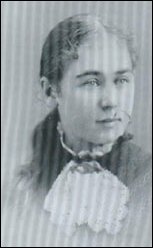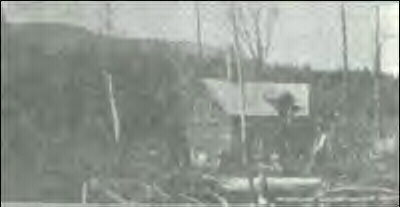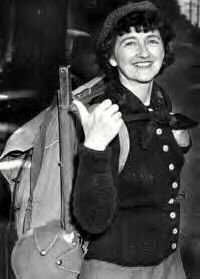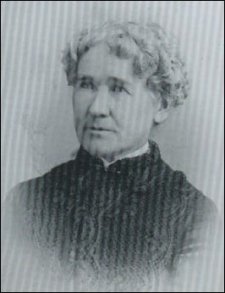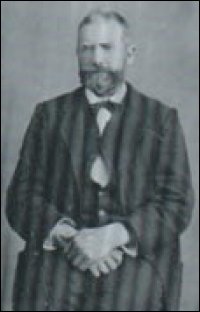Alger: at that time, the little village was actually called Lookout. Sometime by 1914 the town was named after the Alger Logging Co., owned by Russell Alger and Revaux K. Hawley, who logged the area until 1901. Read our 4-part series on Alger (Lookout) and its pioneers.
|

|
Brosseau: the daughter she mentions here is Nina, the youngest Cook daughter, who was then living in Rockford, Illinois. Mr. Brosseau was Dwight Brosseau, whose pioneer parents, George and Edna, lived between Sterling and Sedro. His mother's lasting legacy was that she sewed the flag that waved from the top of a 200-foot fir on July 4, 1890, in Sedro as the two villages held dueling celebrations.
|

|
Fairie's death: Fairie Cook Litchfield died on Aug. 15, 1926, at her sister's home in Rockford. She was a widow.
|

|
Deputy Surveyor: that was Fred Hall, mentioned in Nina's diary above. He and his brother Woodbury homesteaded in the Prairie district, relatives of the Kallochs, for whom the road is named. The editor saw several affectionate letters in the family collection from Fred Hall to Fairie while she attended Wellesley College. She wound up marrying the father of her college roommate.
|

|
Girl friend: the girl was Louisa Anderson, a Swedish immigrant whose brother worked at Cook's shingle mill. She later married Joseph Hart, one of the four British bachelors who settled future Sedro.
|

|
Sections 7 and 12: the sections she refers to are in Township 36 North, Range 4 East. The town of Alger was in section 7, with the west fork of the Samish flowing nearby; the east fork flows through the east part of the township from section 12 down through Warner's Prairie. We suspect that Fairie found the claim with the help of Charles Warner, who logged Cook's timberlands.
|

|
Section 11: that section is about four miles east of the town of Alger and a half mile of what was then called Dry Creek. On the 1925 Metsker's map, that whole section is owned by David Tozer. We hope that a reader can identify who David Tozer was. His wife is listed as Julia Tozer and they owned large pieces of land all over the county. It may have been a relative of A.A. Tozer, the druggist partner of A.E. Holland in Sedro in the 1880s. Please email us if you know.
|

|
Years later: that would have been sometime after Fairie married Cyrenus Wirt Litchfield in Oak Park, Illinois, in December 1896, and sometime before Mortimer died on Nov. 22, 1899, in the Philippines.
|

|
Safe: there is a note of irony here. After he made a small fortune in Kansas, building the first iron bridge over the Kaw river, and after his second daughter died in a fire in Topeka, Cook moved his family to Santa Barbara in 1871. Los Angeles was barely a village and Santa Barbara was a market center on the California coast, but really just a smattering of buildings. Cook brought a safe to town and started a bank there, which became the first gold bank south of San Francisco, and his safe might have been the first one set up in southern California.
|

|
Please sign our guestbook so our readers will know where you found out about us, or share something you know about the Skagit River or your memories or those of your family. Share your reactions or suggestions or comment on our Journal. Thank you for taking time out of your busy day to visit our site.
|
Sign Our Guestbook

View Our Guestbook
|
Remember, we welcome correction and criticism. Please click on the email slot at the right to report any problems with these pages or to suggest ideas for future stories. This is a completely free site. We fund it by providing an online magazine for paid subscribers. If you are not already a subscriber and you would like to help support our considerable research costs, you can subscribe for just $20.00 per year. As a paid subscriber, you will receive eight yearly issues plus many rare treats between times, including scans of photos and documents that illustrate local history, before they are shared with anyone else. You can go here for Subscription details and you can read the preview edition to see examples of our in-depth research. You may also order gift subscriptions for friends, family or clients who are interested in local history or students or military people who are away from home. Or you can email us for more details. Do you have scanned photos to share? Or you can mail us copies. See addresses to right.
|
Email us at: journal@stumpranchonline.com

Mail copies/documents to street address: Skagit River Journal, 810 Central Ave., Sedro-Woolley, WA, 98284.
|

 810 Central Ave., Sedro-Woolley, Washington, 98284
810 Central Ave., Sedro-Woolley, Washington, 98284